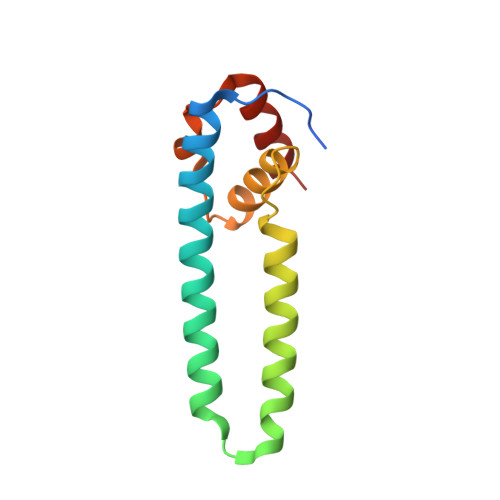Fortuitously compatible protein surfaces primed allosteric control in cyanobacterial photoprotection.
Steube, N., Moldenhauer, M., Weiland, P., Saman, D., Kilb, A., Ramirez Rojas, A.A., Garg, S.G., Schindler, D., Graumann, P.L., Benesch, J.L.P., Bange, G., Friedrich, T., Hochberg, G.K.A.(2023) Nat Ecol Evol 7: 756-767
- PubMed: 37012377
- DOI: https://doi.org/10.1038/s41559-023-02018-8
- Primary Citation of Related Structures:
8AG8 - PubMed Abstract:
Highly specific interactions between proteins are a fundamental prerequisite for life, but how they evolve remains an unsolved problem. In particular, interactions between initially unrelated proteins require that they evolve matching surfaces. It is unclear whether such surface compatibilities can only be built by selection in small incremental steps, or whether they can also emerge fortuitously. Here, we used molecular phylogenetics, ancestral sequence reconstruction and biophysical characterization of resurrected proteins to retrace the evolution of an allosteric interaction between two proteins that act in the cyanobacterial photoprotection system. We show that this interaction between the orange carotenoid protein (OCP) and its unrelated regulator, the fluorescence recovery protein (FRP), evolved when a precursor of FRP was horizontally acquired by cyanobacteria. FRP's precursors could already interact with and regulate OCP even before these proteins first encountered each other in an ancestral cyanobacterium. The OCP-FRP interaction exploits an ancient dimer interface in OCP, which also predates the recruitment of FRP into the photoprotection system. Together, our work shows how evolution can fashion complex regulatory systems easily out of pre-existing components.
Organizational Affiliation:
Max Planck Institute for Terrestrial Microbiology, Marburg, Germany.















